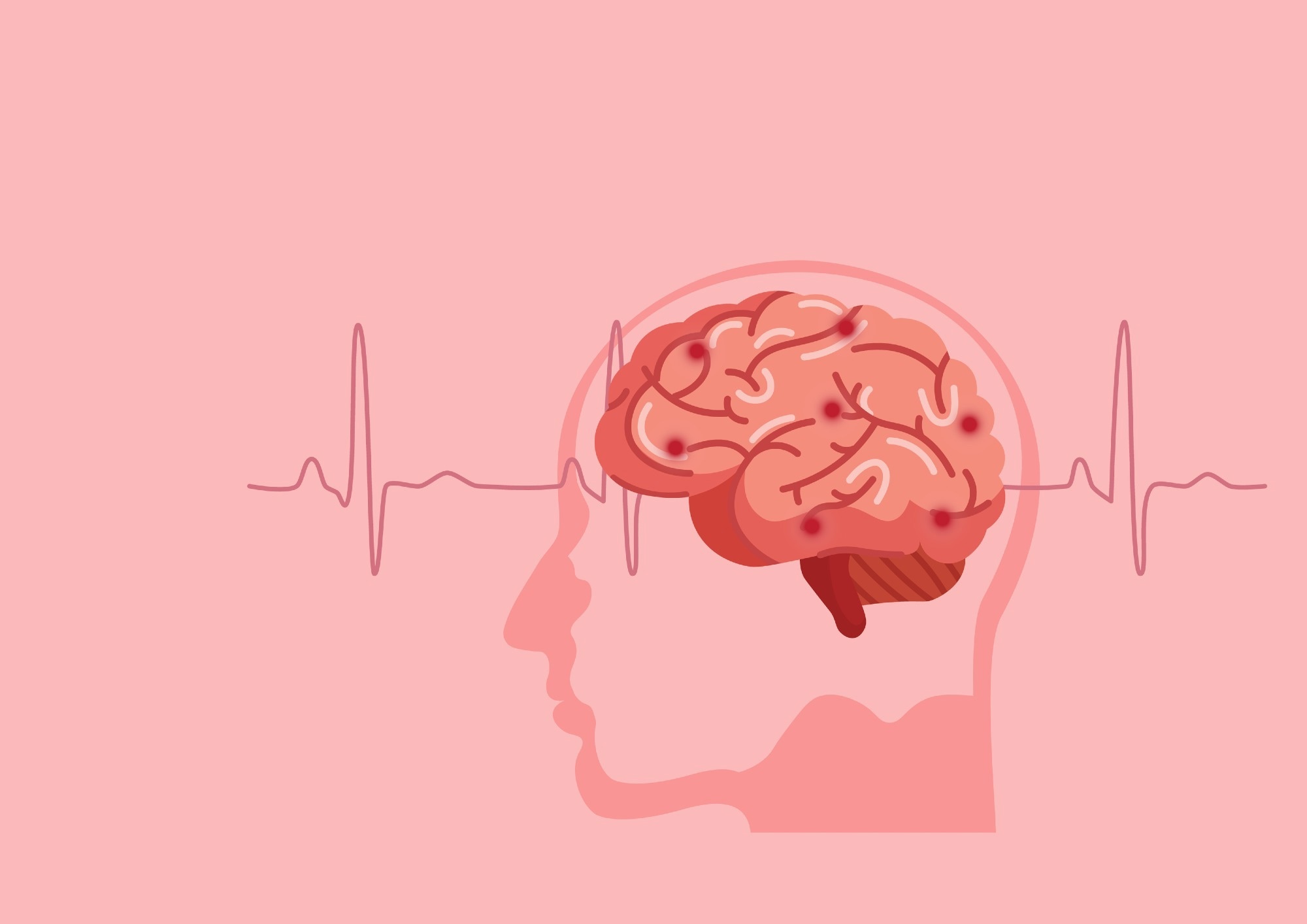In a recent study published in PNAS, researchers examined the neuronal activity of the dying human brain before and after the clinical discontinuation of ventilatory aid to investigate whether the dying process may engage the human brain.
 Study: Surge of neurophysiological coupling and connectivity of gamma oscillations in the dying human brain. Image Credit: Piyaphat_Detbun/Shutterstock.com
Study: Surge of neurophysiological coupling and connectivity of gamma oscillations in the dying human brain. Image Credit: Piyaphat_Detbun/Shutterstock.com
Background
Near-death experiences (NDEs) biologically contradict our fundamental understanding of the dying brain, which is assumed to be non-functional in such circumstances. However, animal studies of respiratory and cardiac arrest have reported contradictory findings.
Authors previously demonstrated that abruptly ending circulatory function and/or acute hypoxia enhanced gamma (γ) activity among healthy animals, with enhanced directed and functional connections in oscillations.
Elevation of high-frequency-type oscillations, a possible measure of awareness, has been observed in critically ill individuals.
However, brain function during cardiac arrest is not completely understood. While the loss of overt consciousness is always associated with cardiac arrest, it is unknown whether patients can have covert consciousness while dying.
About the study
In the present retrospective study, researchers investigated the neural correlates in dying humans that may be responsible for subjective perceptions reported by NDE.
The study included four comatose, dying patients admitted to Michigan University’s neurointensive care unit (NICU) from 2014 onward who underwent electroencephalogram (EEG) assessments for cardiovascular arrest-associated anoxia and extensive hemorrhagic areas in the brain.
The patients showed no sign of overt consciousness or voluntary behavior on the last day of their lives, as indicated by their Glasgow Coma Scale scores.
To measure the functional activity of the brain around the time of cardiac arrest, EEG signals obtained before and post-discontinuation of ventilatory support were analyzed. Particularly for the following characteristics: (i) local and long-range phase-amplitude coupling (PAC) between low- and high-frequency oscillations; (ii) temporal dynamics of EEG power; and (iii) directed and functional cortical connectivity across different frequencies, including theta, alpha (α), and beta (β) oscillations.
In addition, the four patients’ electrocardiogram (ECG) signals were assessed. Before EEG evaluation, the dying stages were categorized based on EEG and ECG features.
Stage 1 (S1, baseline) represented the final hours of life while being ventilated; S2 represented the period between ventilator withdrawal and acutely suppressed EEG findings in the patients; and S3-end was described using the ECG characteristics of the Borjigin laboratory’s electrocardiomatrix (ECM) method.
Results
The global hypoxia resulting from withdrawing ventilator support markedly, rapidly, and transiently stimulated γ activities (>25Hz) in two patients (Pt1 and Pt3) with a history of seizures, as demonstrated by a rise in absolute electroencephalographic power in the γ frequency bands.
The surge was both local, within the temporal-parietal-occipital (TPO) junction, and global, between the temporal, occipital, and zones and prefrontal areas on the contralateral side. In addition, the team observed a surge in the inter-frequency-type coupling between γ oscillations and slow-speed oscillations (below 25.0 Hz) and enhanced directed- and functional-type linkage in γ bands between the right and left hemispheres of the brain.
High-frequency oscillatory movements occurred in parallel with activated β/γ cross-regional (crPAC) in the posterior cortex with slower oscillations in the prefrontal cortex.
Notably, the two patients showed surges of directed and functional types of connectivities at several frequency bands (between 25 and 150 Hz) in the ‘hot zone’ of the posterior cortex, a critical site for conscious-type processing. The γ activity surged further with the worsening of the cardiac conditions in the patients.
At near death, increases in PAC of γ oscillations, crPAC, and γ synchrony in the posteriorly located hot zones were observed. In addition, long-range γ synchrony between the posterior hot zones and frontal lobes also increased.
After the rapid local γ activation in the posterior temporal-parietal-occipital zones, the global, long-range, and inter-hemispheric communications in γ oscillatory movements between the prefrontal regions and the temporal-parietal-occipital zones were observed in the dying human brain.
The somatosensory cortices (SSCs) responded at the earliest to the hypoxic conditions, as indicated by an instantaneous surge in γ power in the somatosensory cortices during S2.
Inter-regional-type coupling between γ oscillatory movements in the cortices and β oscillatory movements in the prefrontal, dorsolateral prefrontal cortex (DLPFC), and ventrolateral prefrontal cortex (VLPFC) areas.
A decrease in heart rate further enhanced β-γ PAC in the SSCs of the left side, and γ oscillatory movements in those on the right side showed increased inter-regional-type coupling with β oscillations in prefrontal regions.
The findings linked the centralized homeostatic regulation of respiration to near-death cerebral cortical activation and are concordant with the probable involvement of homeostasis circuits in animal and human consciousness.
Elevations in heart rate, probably due to an increase in sympathetic activity during S2 following ventilator removal, were observed only in two individuals exhibiting an upsurge in γ activity during the dying process.
The findings indicated that the enhanced cortical activation during the dying process might be regulated by the autonomic nervous system (ANS). The predominantly observed right brain hemisphere activation following hypoxia during S2 indicated that the activated β/γ PAC functions could be of sympathetic origin.
The findings provided a potential EEG signature of out-of-body experience (OBE), a common component of NDE. The upsurge in γ power in VLPFC regions during the early dying phase was surprising and could be due to electromyography (EMG) contamination in EEG data.
Conclusion
The study findings showed that the dying human brain could be activated, as evidenced by increased neurophysiological coupling and functional and directed connection of γ oscillations.
However, it was unclear whether hot zone activation was associated with subjective experience; the surge could be epiphenomenal or pathological.
Journal reference:
-
Xu, G., Mihaylova, T., Li, D., Tian, F., Farrehi, P.M., Parent, J.M., Mashour, G.A., Wang, M.M. & Borjigin, J. (2023) Surge of neurophysiological coupling and connectivity of gamma oscillations in the dying human brain. Proceedings of the National Academy of Sciences, 120 (19). doi: 10.1073/pnas.2216268120

